
Stories
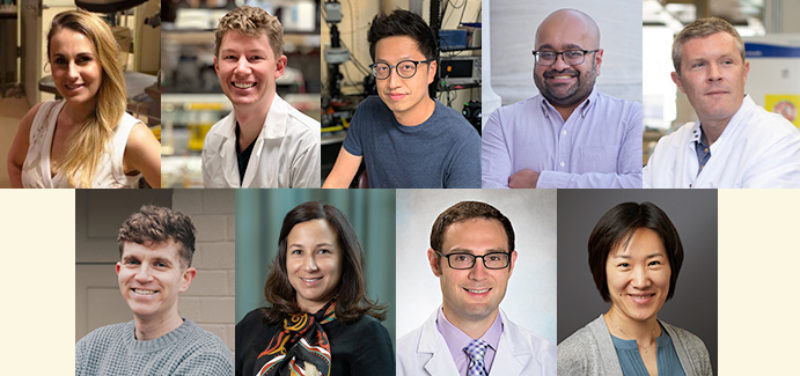
Announcing the 2023 Rita Allen Foundation Scholars
Pioneering early-career biomedical scientists selected for $3.15 million in research investments.
The Rita Allen Foundation has selected its 2023 class of Rita Allen Foundation Scholars, celebrating nine early-career leaders in the biomedical sciences whose research holds exceptional promise for revealing new pathways to advance human health. The selected Scholars will receive grants of up to $110,000 annually for a maximum of five years to conduct innovative research on critical topics in cancer, immunology, neuroscience, and pain. Scholars in the Class of 2023 are investigating gene expression regulation and dysregulation in cancers; the role of a distinctive brain structure, the choroid plexus, in supporting brain health; and the impact of autoantibodies in advancing pain in complicated diseases such as fibromyalgia.
The 2023 class includes four investigators whose research relates to the biology of pain—a complex neurobiological system with widespread societal impact. Two researchers selected for the Rita Allen Foundation Scholars Award in Pain are supported by the Rita Allen Foundation and two are supported by Margaret and William R. Hearst III.
“The scientists selected to join the Class of 2023 are asking bold questions and pioneering new approaches to understand the body’s vast and vital processes—research that informs strategies to prevent and treat diseases,” said Elizabeth Good Christopherson, President and Chief Executive Officer of the Rita Allen Foundation. “We are especially pleased that Margaret and William R. Hearst III are making more opportunities possible with their support of early-career Scholars engaged in pioneering research on the mechanisms of pain—advancing critical discovery science to provide deeply-needed options for relief.”
Offered in partnership with the U.S. Association for the Study of Pain, the Rita Allen Foundation Scholars Award in Pain program aims to combat the high-impact pain that significantly impairs the life or work of some 20 million Americans—an epidemic disproportionately impacting women and people of color.
“Investing in high-risk/high-reward discovery science is critical to developing the treatments of tomorrow. Margaret and I are pleased to partner with the Rita Allen Foundation to support innovative researchers exploring the frontiers of chronic pain—whose impacts our family has felt first-hand,” noted William R. Hearst III.
Since 1976, the Rita Allen Foundation has invested in more than 200 biomedical scientists at the early stages of their careers, enabling them to pursue research directions with above-average risk and promise. Scholars have gone on to make fundamental contributions to their fields of study and have won recognition including the Nobel Prize in Physiology or Medicine, the National Medal of Science, the Wolf Prize in Medicine, the Lasker-Koshland Award for Special Achievement in Medical Science, and the Breakthrough Prize in Life Sciences.
Five of the 2023 Scholars were nominated by research institutions across the United States and selected by the Rita Allen Foundation’s Scientific Advisory Committee of leading scientists and clinicians. The four investigators selected to receive the Rita Allen Foundation Scholars Award in Pain were chosen by a Review Committee of the U.S. Association for the Study of Pain, including previous Rita Allen Pain Scholars and other leaders in the field.
The nine pioneering early-career researchers selected as 2023 Rita Allen Foundation Scholars are:
Lucas Farnung, Harvard Medical School; Milton E. Cassel Scholar
Victoria Abraira; Rutgers, The State University of New Jersey; Award in Pain
Seungwon (Sebastian) Choi, University of Texas Southwestern Medical Center; Award in Pain (In conjunction with Margaret and William R. Hearst III)
Neil Dani, Vanderbilt University
Jesse Dixon, Salk Institute for Biological Studies
Emerson Krock, McGill University; Award in Pain
Nicole M. Martinez, Stanford University
William Renthal; Brigham and Women’s Hospital, Harvard Medical School; Award in Pain (In conjunction with Margaret and William R. Hearst III)
Hongying (Hoy) Shen, Yale University
Below, these newest Rita Allen Scholars offer a window into their current research and reflections on their pathways to the forefront of discovery science.
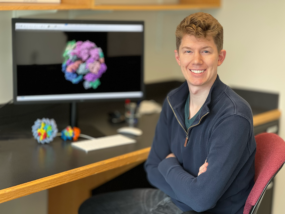
Lucas Farnung, Harvard Medical School
Assistant Professor, Cell Biology
Milton E. Cassel Scholar
B.Sc., University College London
Dr. rer. nat., Ludwig Maximilian University of Munich
Lucas Farnung has been designated the Milton E. Cassel Scholar for the 2023 class of Rita Allen Foundation Scholars. This special award honors the memory of a longtime President of the Rita Allen Foundation who passed away in 2004.
Each human cell takes on an extraordinary feat, as it compacts its two-meter-long genome into a nucleus that is merely a few microns in size. Yet, our genetic material must remain accessible, ready to be read by the cell’s molecular machinery. To mitigate this conflict, the genomic DNA is spooled like yarn around specialized proteins called histones. Together, histones and the DNA form a structure called chromatin, akin to delicate beads on a string. The Farnung lab studies how a cellular machine called RNA polymerase II navigates through chromatin and generates blueprints of the DNA in a process called transcription. We use a combination of biophysical methods, machine learning, and structural biology approaches. Elucidating transcription through chromatin is important to understand how cells develop, morph into diverse types—like heart or liver cells—and react to the environment. With many cancers linked to dysregulated chromatin transcription, a deeper grasp of this process is vital for novel cancer therapy development.
What will funding from the Rita Allen Foundation allow you to do?
Funding from the Rita Allen Foundation will allow us to explore emerging molecular mechanisms at the intersection of chromatin and transcription. Transcription control, pivotal to numerous cellular processes, can, when dysregulated, trigger a broad spectrum of cancers. As a Rita Allen Foundation Scholar, I am excited to integrate our research on chromatin transcription with epigenetic processes. This is a bold step, but it will allow new breakthroughs in our understanding of gene expression regulation and dysregulation in cancers.
How did you enter this career path? Was there anyone or anything that particularly inspired you?
My fascination with science took root during a school lesson on molecular biology, where I was introduced to the mesmerizing structure of the DNA double helix and the complex folding of proteins. The notion that a finely tuned dance of physics and chemistry could dictate life in its myriad forms—from the simplest of unicellular organisms to the breathtaking complexity of human beings—was so exciting! This sparked a fascination in me that has grown into a quest to understand biology at its most fundamental level.
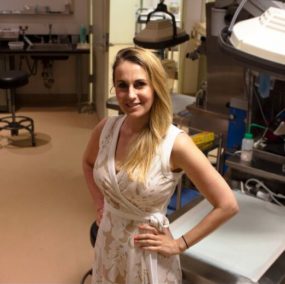
Victoria Abraira, Rutgers, The State University of New Jersey
Assistant Professor, Cell Biology, and Neuroscience
B.S., University of Southern California
Ph.D., Harvard University
Our work proposes a basic blueprint for how spinal cord circuits instantiate top-down emotional context into the modulation of somatosensory input before it even reaches the brain. This work impacts our fundamental understanding of the emotional and attentional aspects of somatosensation and contributes to the emerging picture of the sophistication of contextual processing in the spinal cord and peripheral sensory organs. This work supports the idea of spinal cord and associated peripheral circuits as therapeutic targets for treating conditions affecting somatosensory dysfunctions, like acute and chronic pain. While this specific research project focuses on one neuromodulatory signal, oxytocin, the same blueprint is currently being applied to other modulatory networks implicated in pain modulation, including serotonin, dopamine, norepinephrine, and endocannabinoids.
How did you enter this career path? Was there anyone or anything that particularly inspired you?
I am the first woman in my family to graduate high school and the first person to attend college. Growing up my family always encouraged me, though as Latin American immigrants, they did not always know what path to point me towards. I entered this career path because of teachers and mentors that 1) really believed in me, 2) gave me a chance, and 3) were there to cheer me on when things were not working. When I came to this country, I did not speak any English, my family was very poor, and I was very naive about anything related to science or a career in science. They showed me everything, including how to advocate for myself. Now as a mentor, my main motivation is to inspire the next generation of scientists, including finding ways to amplify their voices. Thus, this award would not be possible without the hard work and dedication of all my current and former lab members. Their ideas and thoughts are reflected in the science that we do every day, including the science that the Rita Allen Foundation is so generously supporting.
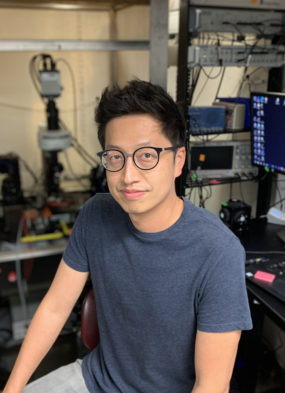
Seungwon (Sebastian) Choi, University of Texas Southwestern Medical Center
Assistant Professor; Psychiatry, Neuroscience, Anesthesiology, and Pain Management
B.S., Korea Advanced Institute of Science and Technology
M.S., Korea Advanced Institute of Science and Technology
Ph.D., Harvard University
In conjunction with Margaret and William R. Hearst III
Each day we experience myriad somatosensory stimuli—hugs from loved ones, warm showers, a mosquito bite, and sore muscles after a workout. These tactile, thermal, itch, and nociceptive signals are detected by sensory neurons innervating the skin, propagated into the spinal cord, and transmitted to the brain via ascending somatosensory pathways. Primary sensory neurons that innervate the skin and detect a wide range of somatosensory stimuli have been identified and well-characterized. In contrast, very little is known about how peripheral signals are integrated and processed within the spinal cord and how these signals are conveyed to the brain to generate somatosensory perception and behavioral responses. Our lab aims to determine the developmental logic, functional organization, and dysfunction of ascending somatosensory circuitry. Our lab explores these exciting areas using new mouse genetic tools in conjunction with advanced molecular, anatomical, physiological, and behavioral approaches.
What will funding from the Rita Allen Foundation Scholars Award in Pain allow you to do?
Touch and pain are subjective experiences that are greatly modulated by internal states as well as pathological conditions—wounded soldiers on the battlefield often do not experience significant pain because they are focused on the battle, and a gentle touch can be perceived as painful, or disturbing, in people with neuropathic pain or autism spectrum disorders. Ascending somatosensory pathways are “sensory gateways” to the brain, and the “gating” of their activities needs to be tightly controlled to maintain normal touch and pain sensations. We think that “sensory gating” at the level of this ascending system is disrupted, and thus aberrant neuronal activities in the ascending pathways give rise to touch and pain abnormalities in these disease states. The Rita Allen Foundation Scholars Award in Pain funding will help us to test this idea by determining the pathophysiological changes of spinal output neurons, in chronic pain states, using neuropathic and cancer pain models.
How did you enter this career path? Was there anyone or anything that particularly inspired you?
I became interested in pursuing a career in biomedical research when I went through liver transplantation surgery as a donor for my father in college. While it was a tremendously difficult time for my family, my experience sparked a passion for biomedical sciences. Afterward, my graduate and postdoctoral training shaped my long-term interest in neuroscience research.

Neil Dani, Vanderbilt University
Assistant Professor, Cell and Developmental Biology
B.S., University of Rochester
M.S., New York Medical College
Ph.D., Vanderbilt University
We research the choroid plexus, a fascinating and understudied structure in the brain that generates cerebrospinal fluid and nourishing substances that support brain health throughout life. Recently with collaborators, we have generated detailed maps of the choroid plexus, which reveal the cellular sources of the nourishing substances and several additional cell types, suggesting previously unappreciated functions. We believe that the breakdown of these cellular functions contributes to neurological and neurogenerative disorders such as Alzheimer’s disease, and that further research could provide novel insights into potential new prevention methods or treatments. To investigate, we are using cutting edge imaging tools that enable us to directly visualize the activity of choroid plexus cells in real time.
What will funding from the Rita Allen Foundation allow you to do?
Studying the choroid plexus requires us to think creatively. While certain problems can be solved by adapting tools from allied fields, other questions call for innovating new techniques. Support from the Rita Allen Foundation will enable us to take risks and develop new approaches and insights. Over time, these efforts will help us explore translational relevance for our work and pursue other funding mechanisms.
How did you enter this career path? Was there anyone or anything that particularly inspired you?
Starting from washing laboratory glassware, I was fortunate to have supportive mentors who introduced me to bench science. Throughout my training, the guidance and trust of these mentors nurtured my passion for research, and I am deeply grateful for their selflessness and commitment to my development. Now, my aim is to inspire and support aspiring researchers from all backgrounds to explore the joys of scientific research and discovery.
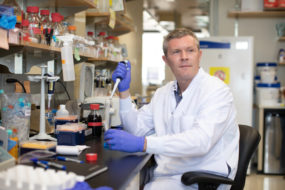
Jesse Dixon, Salk Institute for Biological Studies
Assistant Professor, Gene Expression Laboratory
A.B., Princeton University
Ph.D., University of California San Diego
M.D., University of California San Diego
The Dixon lab is interested in how the spatial organization of genomes affects the acquisition and impact of mutations in cancer. Our genomes are 3 billion base pairs in length and must be compacted into the nucleus of every cell in our body. How our genomes are organized in cells has a major impact on diverse processes, from the expression of genes to the replication of DNA as cells divide. In cancer, our genomes are bombarded with mutations, some of which break and shuffle the genomes creating a mosaic of how these genomes appear in healthy cells. When our genomes are shuffled in cancer cells, this often can place cancer-causing genes in novel environments with altered spatial organization, which can lead to aberrant gene activation that drives the growth of cancer cells. The Dixon lab is interested in understanding where and when such altered gene regulation events occur and understanding what critical factors facilitate altered gene activation in cancer genomes.
What will funding from the Rita Allen Foundation allow you to do?
The funding from the Rita Allen Foundation will allow us to explore novel, high-risk high-reward projects on the role of altered 3D genome structure in cancers. Our understanding of the role of 3D genome organization in both healthy and cancer cells is rapidly expanding, but whether this represents an opportunity to develop novel cancer therapies is unclear. This work will allow us to begin to explore whether we can use our understanding of the functions of 3D genome organization to begin to create novel strategies for diagnosing and treating cancers.
How did you enter this career path? Was there anyone or anything that particularly inspired you?
Both of my parents were scientists but growing up, they never really put any pressure on me to pursue science as a career. Ultimately, I think it was actually working in the lab, both in college and then as a technician right after I graduated, that really got me hooked on science. In the end, I completed an M.D./Ph.D. for my graduate degree. I don’t currently practice medicine, but I think that the medical training I received definitely influences the way I think about problems in the lab.
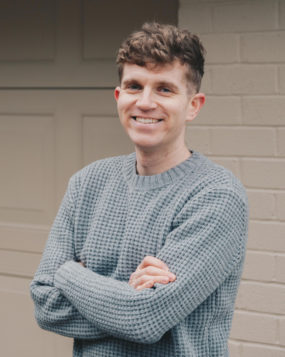
Emerson Krock, McGill University
Assistant Professor, Dental Medicine and Oral Health Sciences
B.Sc., McGill University
Ph.D., McGill University
Fibromyalgia is a chronic, whole-body pain disorder. Despite having a clinical diagnosis for decades, the underlying causes remain poorly understood. During my postdoc, my colleagues and I found that IgG antibodies from fibromyalgia patients cause mice to develop signs of pain, but antibodies from pain-free people do not. The fibromyalgia antibodies bind to satellite glia cells, which surround pain-sensing neurons, and the levels of these antibodies are higher in fibromyalgia patients with more pain. These results suggest a subset of fibromyalgia pain could be mediated by autoantibodies—that is, antibodies attacking parts of our own body. However, why these autoantibodies develop remains unclear. The Krock lab at McGill University is investigating how fibromyalgia autoantibodies develop. One possibility is that altered gut bacteria stimulate an antibody-generating immune response, and if these antibodies recognize molecules similar enough to molecules found on satellite glia, then an autoantibody response could occur.
How did you enter this career path? Was there anyone or anything that particularly inspired you?
As a child I was always fascinated by nature and any little science experiment I could perform. However, it was not until I was an undergraduate that I realized I could pursue a career in research and science. I was first a summer student in Lisbet Haglund’s lab at McGill University. I then began as an M.Sc. student in her lab and later transferred to the Ph.D. program. Laura Stone was a close collaborator and introduced me to the world of pain neuroscience, which completely fascinated me. Drs. Haglund and Stone encouraged me to pursue my interests in pain research, and I then moved to Sweden to do a postdoc with Camilla Svensson at the Karolinska Institute. Dr. Svensson further encouraged me and helped me work towards starting my own research group. These mentors have had a large impact on my passion for pain research and my career path. On a more personal level, both of my parents have chronic low-back pain, so the reality of living with chronic pain was omnipresent as I grew up. They now both give a little bit of extra inspiration for my research.
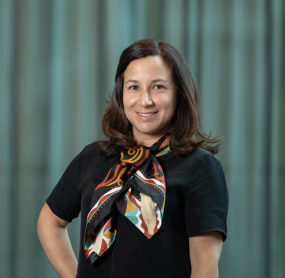
Nicole M. Martinez, Stanford University
Assistant Professor, Chemical and Systems Biology; Developmental Biology
B.S., University of Puerto Rico-Mayaguez
Ph.D., University of Pennsylvania
Messenger RNAs (mRNAs), the instructions to make proteins, are composed from a 4-letter alphabet of RNA bases. These bases are extensively chemically modified to create new letters in the alphabet that change the meaning of the message. These changes can impact the fate and function of mRNAs in cells. The full collection of RNA modifications in cellular mRNAs represents a previously unappreciated layer of gene regulation on top of what is hard-wired in our genome. We are studying how these chemical modifications are added very early when mRNAs are “born,” and how they impact how mRNAs are processed and interpreted in cells. RNA modifications have an important role in health and disease: many RNA modifying enzymes have been associated with a wide range of human diseases, particularly neurodevelopmental disorders and cancer. Our goal is to connect molecular functions of RNA modifications to normal and disease traits using innovative high-throughput sequencing methods, RNA biochemistry, and model systems.
What will funding from the Rita Allen Foundation allow you to do?
Why and how small chemical changes in RNA lead to human diseases is still largely unknown. The Rita Allen Foundation will allow us to work toward uncovering the molecular basis of inherited neurodevelopmental disorders caused by dysregulation of RNA-modifying enzymes and reveal targets for therapeutic intervention.
How did you enter this career path? Was there anyone or anything that particularly inspired you?
Growing up I didn’t know any scientists or know that research was a career path. I pursued an undergraduate degree in industrial biotechnology at the University of Puerto Rico, thinking I might work in the pharmaceutical manufacturing industry. Everything changed during a summer research experience at the Broad Institute, where I had my own project and my first experience with discovery. I am indebted to the early mentors who provided me with key opportunities to identify as a scientist. My Ph.D. and postdoc advisors were exemplary role models, and their intentional mentorship, support, and encouragement helped me persevere as a scientist. Early exposure to research, access to quality mentors and sustained mentorship are among the most impactful opportunities that we can provide to launch careers in science for trainees of diverse backgrounds.
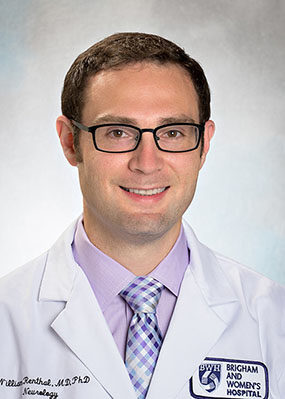
William Renthal, Brigham and Women’s Hospital, Harvard Medical School
Associate Professor, Neurology; and Director, Headache Research
Ph.D., University of Texas Southwestern Medical Center
M.D., University of Texas Southwestern Medical Center
In conjunction with Margaret and William R. Hearst III
The Renthal lab studies the genomic and epigenomic mechanisms that contribute to conditions related to refractory headache and facial pain. This work aims to reveal molecular features that are unique to pain-related cells and circuits that could be used to develop novel strategies for pain therapeutics with fewer side effects. I also co-direct the Harvard PRECISION Pain Center, an NIH-funded network of pain clinicians and scientists who are leveraging advanced multi-omic technologies to characterize the specific cell types and states associated with pain using human samples. Together, this work aims to improve translation of basic research discoveries into safer treatments for patients with refractory headache and/or pain conditions.
What will funding from the Rita Allen Foundation Scholars Award in Pain allow you to do?
The Rita Allen Foundation Scholars Award in Pain will provide the flexibility to explore high-risk projects that we believe could offer important new insights into pain neuroscience. Specifically, we will now be able to test new ideas and speed the development of novel tools our group develops to selectively inhibit human nociceptors, which if successful, could provide fundamentally new ways to treat refractory pain.
How did you enter this career path? Was there anyone or anything that particularly inspired you?
Fantastic mentorship is both what launched my journey to become a physician-scientist and what helped me navigate the many challenges along the way. I’ve had so many great mentors, it’s hard to know where to start! In my freshman year in college, I worked in a cancer research laboratory directed by Eva Lee. The excitement in her lab for discovering new biology with immediate clinical relevance was what initially set me on a direct path to an M.D./Ph.D. program. In graduate school, I had the great fortune of working with Eric Nestler. During that time, I was lucky to absorb just a tiny fraction of his super human passion and work ethic for improving the standard of psychiatric research and care. And, my postdoctoral advisor, Michael Greenberg, whose fearlessness for exploring new frontiers in molecular neuroscience showed me how difficult questions can be answered by simply building the right tool. In summary, find great mentors—then work hard to become one yourself!
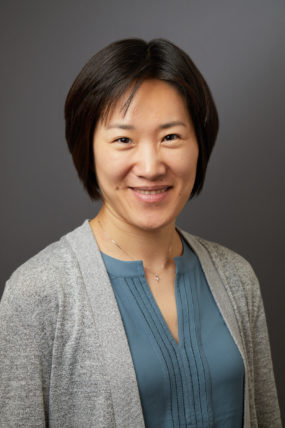
Hongying (Hoy) Shen, Yale University
Assistant Professor, Cellular and Molecular Physiology
B.S., Nanjing University
Ph.D., Yale University
The nervous system harbors numerous metabolic enzymes and transporters that play important roles in brain physiology. However, the functions of hundreds of these, including those genetically linked to neurological and psychiatric disorders, remain poorly understood. To bridge this knowledge gap and overcome technical barriers, our laboratory has devised a suite of mass spectrometry metabolomics-based biochemistry methods, combining in vitro activity-based metabolomics with neuronal cellular metabolomics screening, to simultaneously investigate multiple disease-associated genes in a multiplexed format. This “deorphanization” pipeline holds the promise of uncovering novel brain biochemistry governed by these orphan metabolic genes, elucidating their impact on neuronal metabolism and synaptic transmission. Focusing on disease-associated genes might yield insights into the pathologies of brain disorders and facilitate the development of new diagnostics and therapeutics.
What will funding from the Rita Allen Foundation allow you to do?
My proposal to “deorphanize” metabolic genes involved in brain physiology carries strategic risks stemming from the exploration of the “unknowns,” making it unsuitable for traditional funding mechanisms. However, this proposal holds significant potential for high rewards, as each of these orphan genes could offer significant insights into brain biochemistry and open new avenues of research with translational impact. The funding from the Rita Allen Foundation will therefore accelerate our investigation of multiple disease-associated genes and allow us to redirect our focus towards the nervous system.
How did you enter this career path? Was there anyone or anything that particularly inspired you?
My education and scientific training in complementary fields play an important role in shaping my current research interest in metabolic biochemistry and cellular metabolism. My bachelor’s degree in chemistry and Ph.D. in biochemistry and cell biology have provided me with a unique skill set to investigate metabolism from both chemical and cell biology perspectives.